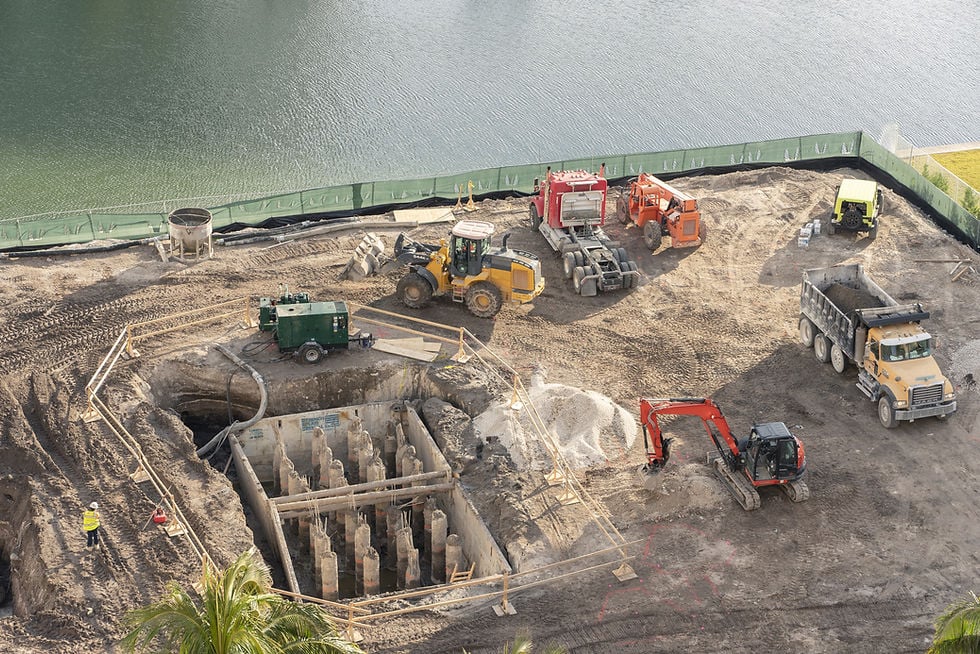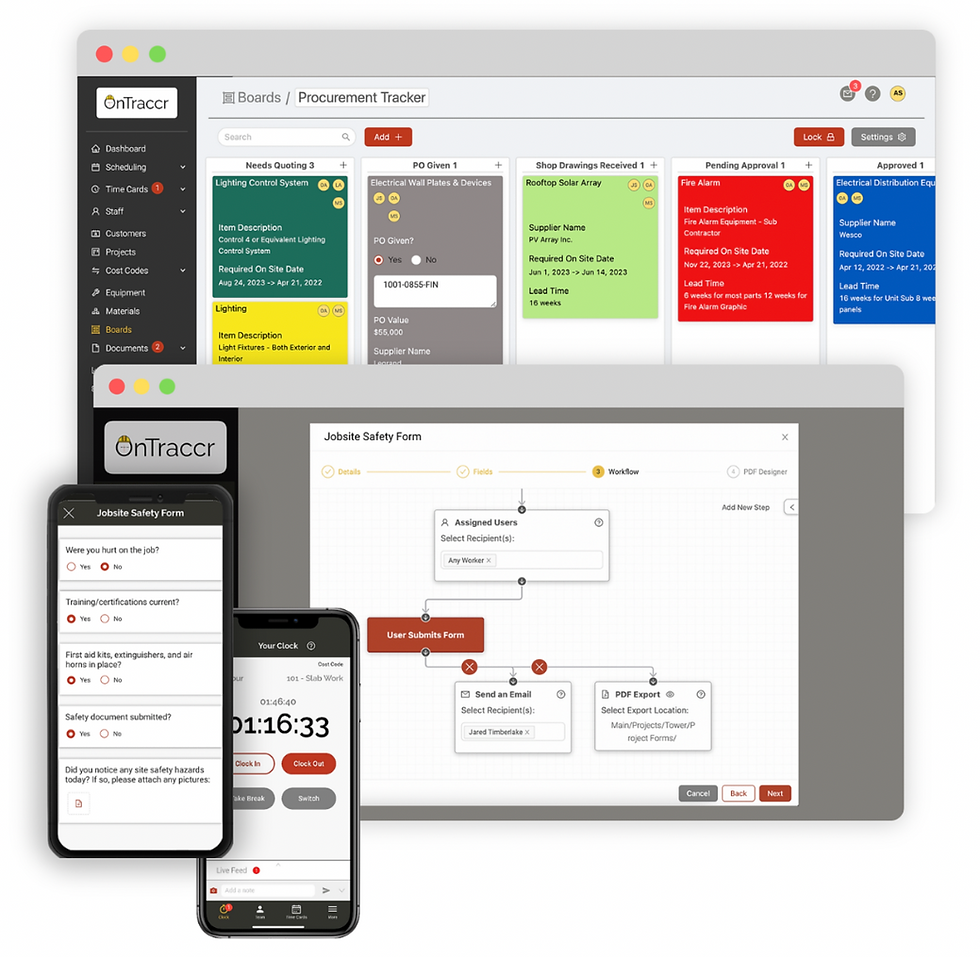Construction projects are often large, complex, and involve a variety of stakeholders, including architects, engineers, contractors, and sub-contractors. As a result, construction project managers face a variety of challenges throughout the project lifecycle, including scope creep, budget constraints, risk management, communication, and time management. However, with careful planning, effective communication, and the right tools, these challenges can be overcome.
In this article, we will explore the top five challenges faced by project managers in the construction industry and provide tips and strategies to overcome them. We will also discuss how construction workflow management software like Ontraccr can help project managers manage their projects more efficiently and achieve greater success.
1. Scope Creep
Scope creep is a common problem where the project's requirements and objectives tend to grow beyond the original scope, leading to schedule delays, increased costs, and reduced quality of work. This problem is often caused by inadequate planning, unclear communication, or changes in stakeholder requirements.

Example: Suppose a construction company is tasked with building a new office building for a client. During the project, the client added additional features and amenities that were not part of the original scope, such as a rooftop garden, fitness centre, and coffee shop. These changes require more materials, labour, and time, which can lead to increased costs, longer timelines, and decreased quality if the project team is not prepared to manage these additional requirements.
Pro Tips:
-
Establish a clear project scope and communicate it effectively to the project team and stakeholders.
-
Engage the stakeholders in the initial planning stages to ensure their expectations are aligned with the project scope.
-
Create a change control process that assesses the impact of any changes before they are approved.
-
Track any changes that are made to the project scope and their impact on the budget, schedule, and quality of the project.
2. Resource Management
Resource management is the process of balancing available resources such as people, materials, and equipment with the project's requirements. This problem can arise when resources are over-allocated, under-utilized, or when there are conflicts over resource allocation.

Example: Let's say a project manager is tasked with building a new hospital. One of the critical resources required for the project is a specialized type of concrete that is in high demand. If the project manager fails to procure the necessary amount of concrete, the project's construction can be delayed, leading to increased costs and missed deadlines.
Pro Tips:
-
Ensure that there is a clear understanding of the resources required and work with the project team to ensure that everyone is aware of their roles and responsibilities.
-
Identify the critical resources that are required for the project and allocate them first.
-
Monitor resource usage and availability on an ongoing basis to ensure that resources are used efficiently and effectively.
-
Plan for resource constraints and have a plan in place to deal with unforeseen changes or conflicts that may affect resources.
3. Risk Management
Risk management involves identifying, assessing, and managing risks to minimize their impact. This problem can arise when risks are not identified, when they are not managed appropriately, or when the risk management plan is inadequate.

Example: A construction project may be at risk of delays due to unforeseen weather conditions which can impact things such as scheduled concrete pours. If the project team had not identified this risk or developed a contingency plan, it may lead to missed deadlines and increased costs for all stakeholders.

-
Establish a risk management plan that includes identifying potential risks, assessing their impact and likelihood, and developing mitigation plans for each risk.
-
Assign a risk manager to oversee risk management activities and ensure that all risks are identified, assessed, and managed appropriately.
-
Review the risk management plan regularly and update it as needed to ensure that new risks are identified and managed effectively.
-
Train the project team on how to identify and manage risks and involve them in the risk management process.
-
Use data from past projects to identify patterns such as poor weather and plan around them.
4. Communication
Poor communication can lead to misunderstandings, delays, and decreased quality. This problem can arise when the project team or stakeholders are not adequately informed, or when communication channels are inadequate.

Example: Suppose a construction project manager fails to communicate the project's progress and any changes that occur to stakeholders. This lack of communication can lead to misunderstandings, delays, and potential rework if the stakeholders are not aware of the project's status.
Pro Tips:
-
Establish a communication plan that outlines the communication channels, frequency, and information that needs to be communicated to stakeholders.
-
Ensure that all stakeholders are informed and involved in the project from the beginning and that there is a two-way communication flow between the project team and stakeholders.
-
Use clear and concise language to ensure that stakeholders understand the project's progress, challenges, and next steps.
-
Regularly review the communication plan and update it as needed to ensure that all stakeholders are informed of the project's progress and any changes that occur.
5. Time Management
Example: Suppose a construction project manager fails to adequately schedule the project timeline, leading to delays in the project's completion. These delays can lead to increased costs, missed deadlines, and decreased quality if the project team is not able to manage them effectively.
Pro Tips:
-
Develop a project schedule that includes all activities and milestones required to complete the project.
-
Identify the critical path of the project and allocate resources and time to ensure that it is completed on time.
-
Monitor the project schedule regularly and update it as needed to ensure that the project is on track.
-
Communicate any schedule changes or delays to stakeholders and ensure that the project team is equipped to manage them effectively.
How Construction Workflow Automation (CWA) Software Can Help
Project management is a complex and challenging role, especially in the construction industry. Construction project managers face a variety of challenges throughout the project lifecycle, including scope creep, budget constraints, risk management, communication, and time management. However, these challenges can be mitigated and overcome with careful planning, effective communication, and regular monitoring and review.

Project managers can also use construction workflow management software, such as OnTraccr, to manage their projects more efficiently and overcome these challenges. OnTraccr offers a range of features that can help project managers manage their projects, collaborate with stakeholders, and track progress in real-time.
-
To overcome the challenge of scope creep, project managers can use OnTraccr’s smart tracking boards to create a detailed project plan that is based on the scope of work, prioritize tasks, and track progress against milestones.
-
To manage budget constraints, project managers can use OnTraccr’s built-in budget tracking system to monitor project expenses, estimate costs, and track actuals against budgets.
-
To manage risk, project managers can use OnTraccr to identify potential risks through the use of advanced analytics, allowing them to assess their impact and likelihood, and develop risk mitigation strategies.
-
To overcome communication challenges, project managers can use OnTraccr to create a communication plan, define communication channels, and track communication with all stakeholders.
-
To manage time effectively, project managers can use OnTraccr to create a detailed project schedule, monitor progress against the critical path, and track progress against deadlines.
By implementing the tips provided above and using construction workflow management software like OnTraccr, you can increase the likelihood of project success and build strong, positive relationships with stakeholders.






